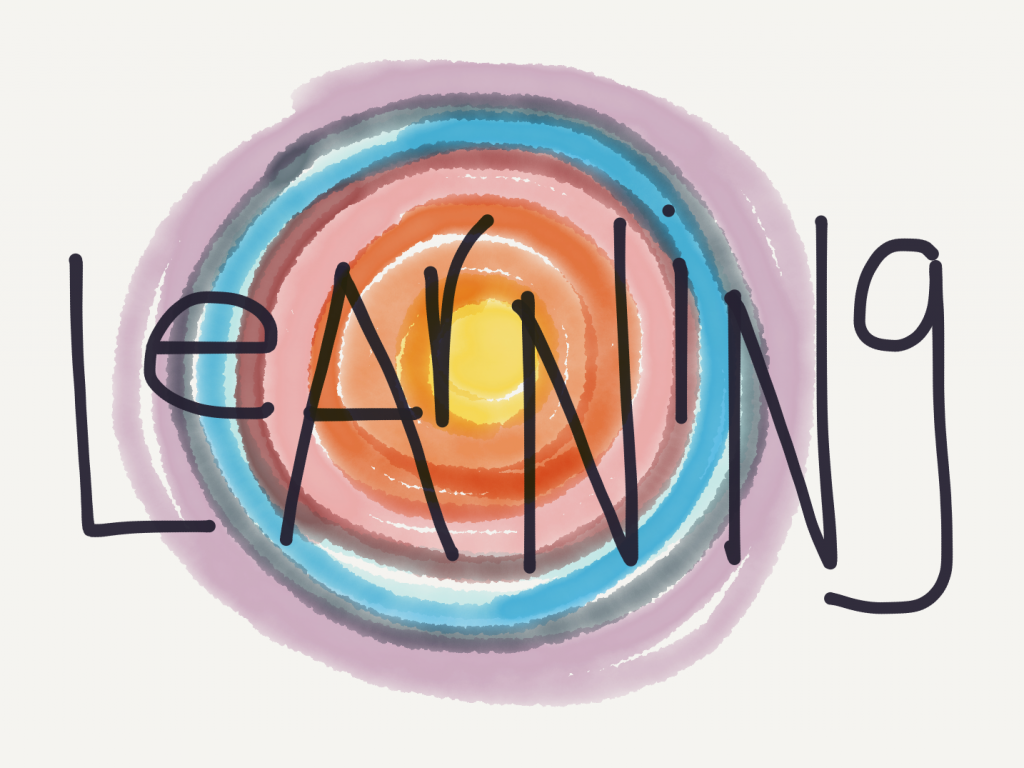 I was in my car the other day, thinking about all the workplace learning projects I’m currently involved in. At times, I feel like I’m moving a giant rock up a hill, with gravity being “lets push content to our learners.” I keep pointing to the importance of practice, context, reflection, informal learning. But I realize I have not sufficiently highlighted the importance of teaching as a practice about relationships. About being human. About, liberation and yes, about LOVE.
I was in my car the other day, thinking about all the workplace learning projects I’m currently involved in. At times, I feel like I’m moving a giant rock up a hill, with gravity being “lets push content to our learners.” I keep pointing to the importance of practice, context, reflection, informal learning. But I realize I have not sufficiently highlighted the importance of teaching as a practice about relationships. About being human. About, liberation and yes, about LOVE.
On our local public radio station, KUOW, ran a story about Nate Gibbs-Bowling reflecting on segregation in Washington state schools and what he is doing about it. At the core of his thesis was that teaching was relationship centric. His success with students of color was not dependent on his subject matter expertise, but his relationship with those students. If you have five minutes, take a listen: Washington Schools Are Segregated And That’s Not OK | KUOW News and Information
Nate’s experience in K-12 education rang a bell with me in my experience with workplace learning. To get the engagement that leads to gains in the application of learning, I use two things. The first is to work as hard as I can to make sure the learning offering has real, applicable relevance to the learner in doing their job. The second is to get to know them and use that relationship to engage with the learners to co-discover ways to liberate the application of the learning.
So if we believe (and hopefully can prove) that teaching is relational, what does that imply for online learning and teaching online, especially the proliferation of self paced, content centric elearning? Or worse, online teaching as enforcement and control.
It means we have to challenge the status quo of content-centricity! This does not mean throwing out content, but it means starting with relationship in the appropriate contexts.
My friend and colleague, educator Brad Beach of Australia and I have been having a years long, very slow conversation on what unlocks learner engagement online and if it varies by domain. I have changed a lot of my thinking about online interaction over time, both as I’ve learned and the environment has evolved, but one thing has always been central. Treat people like real, human beings. Use what the Dali Lama calls being “heard, seen and loved.” We may use the word “respected,” but I think it really is about love. But suit yourself! 🙂
A week ago during one of these conversations (they usually happen very early my Friday morning, Brad’s late Friday night) Brad came back again after working with some folks trying to do more vocational education online, with, as they call them in Australia, the “tradies.” He said “Nancy, you were right.” There had been a lot of push back that tradies don’t hew to this idea of relationship building online. Well heck, they do. It might look and sound different, that’s all.
I asked him, “so what does that say about the facilitation of online learning?” Brad, smart man that he is, answered “it is about good teaching. Period. Online or offline.” And together, our experience tells us that good teaching is, among other things, relationship centric.
 Relationship Centric Practices in Online Teaching
Relationship Centric Practices in Online Teaching
So let’s name some of these practices. I’ll share a few of mine. Please share some of yours in the comments.
- Bring your whole self. A workplace learner is juggling many things. Compartmentalization takes more energy to maintain. Bring a little bit of who you are, and find out a little bit of who they are. This helps identify opportunities to liberate learning, often in unexpected ways. For me, a little goofiness goes a long way. Just a little bit.
- Bring your unknowingness and curiosity along with your knowledge. As adults, we are co-learners. We learn with and from each other through our conversations, activities and reflections. If we are “know it alls” we often block this co-learning.
- Bring human expression into all forms of communication. Use text based body language. (I’m jumping up and down in my chair as I read your response!) Add pictures and images (even silly little sketches) that not only contextualize the content, but our engagement with it and its application in our lives.
- Keep the content tap turned to low. This is really, really hard for me. Look at the length of this blog post. I’ll be working on this until the day I die. But pouring more on rarely is the key to engaged teaching and learning.
What do you suggest?
Edit on 2/11: Some related links:
- http://durffsblog.blogspot.com/2016/02/erasing-distance-and-time-educ-8842.html – make sure to read down to the comments.
- http://ctl.mesacc.edu/crossroads/ Resources for matching tools to learning needs